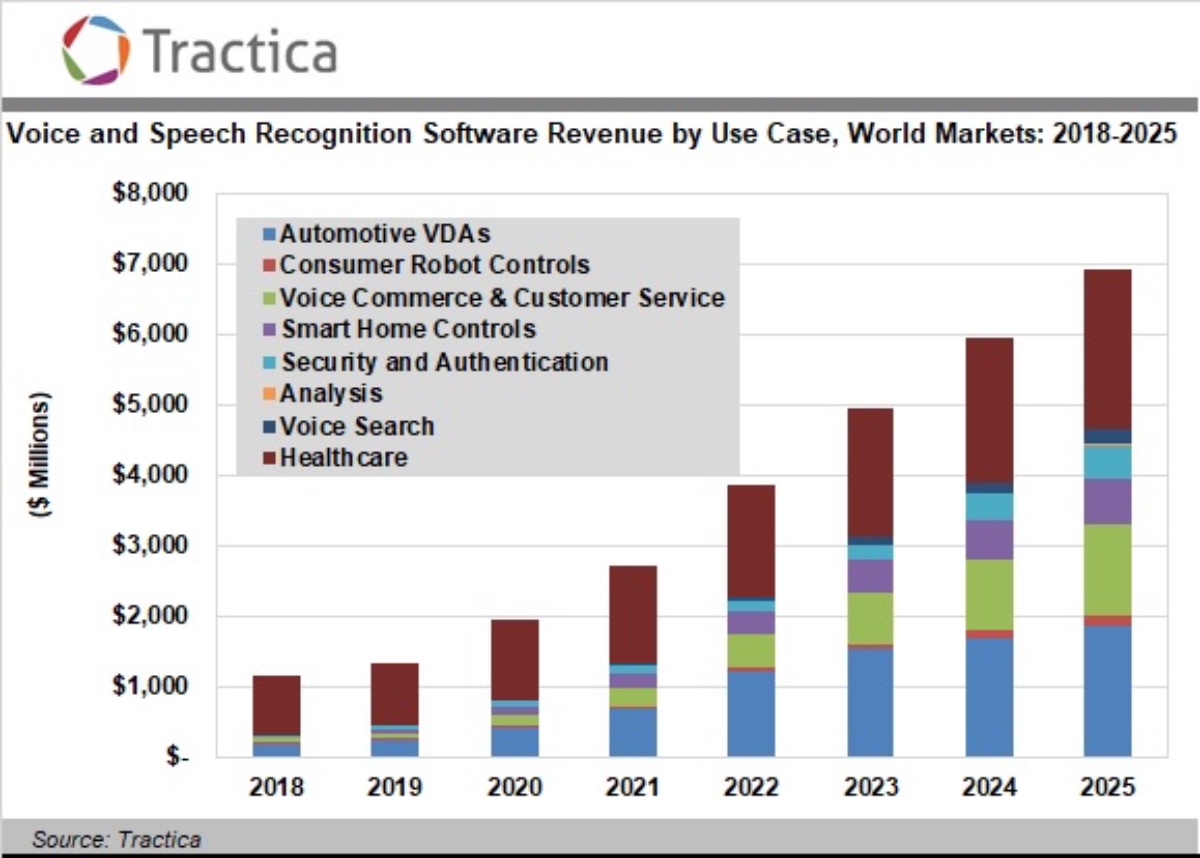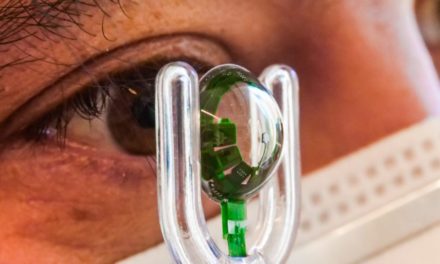Voice and speech recognition technology has undergone a transformation in recent years, thanks to the successful utilization of machine learning and deep learning-based natural language processing (NLP) systems.
According to a new report from Tractica, voice and speech recognition has become the tip of the technology spear for a broadening range of sophisticated voice services. Increasingly, companies are building viable market use cases in which the human voice will control highly sophisticated, automated processes and operations.
Tractica forecasts that the global market for voice and speech recognition software will increase from $1.1 billion in 2017 to $6.9 billion by 2025. The market intelligence firm anticipates that the leading use cases for the technology during that period will include healthcare (clinical documentation), automotive virtual digital assistants (VDAs), and voice commerce and customer service applications. Additional use cases will include smart home controls, security and authentication, and voice search, among others.
“Speech recognition technology has been around for quite a while, but it was the emergence of smartphones and cloud computing that was the real game-changer for this market,” says principal analyst Mark Beccue. “Artificial intelligence algorithms have improved voice and speech recognition accuracy rates significantly in the span of a few short years, and these new capabilities are enabling a wider range of applications for spoken interfaces across multiple industry sectors.”




